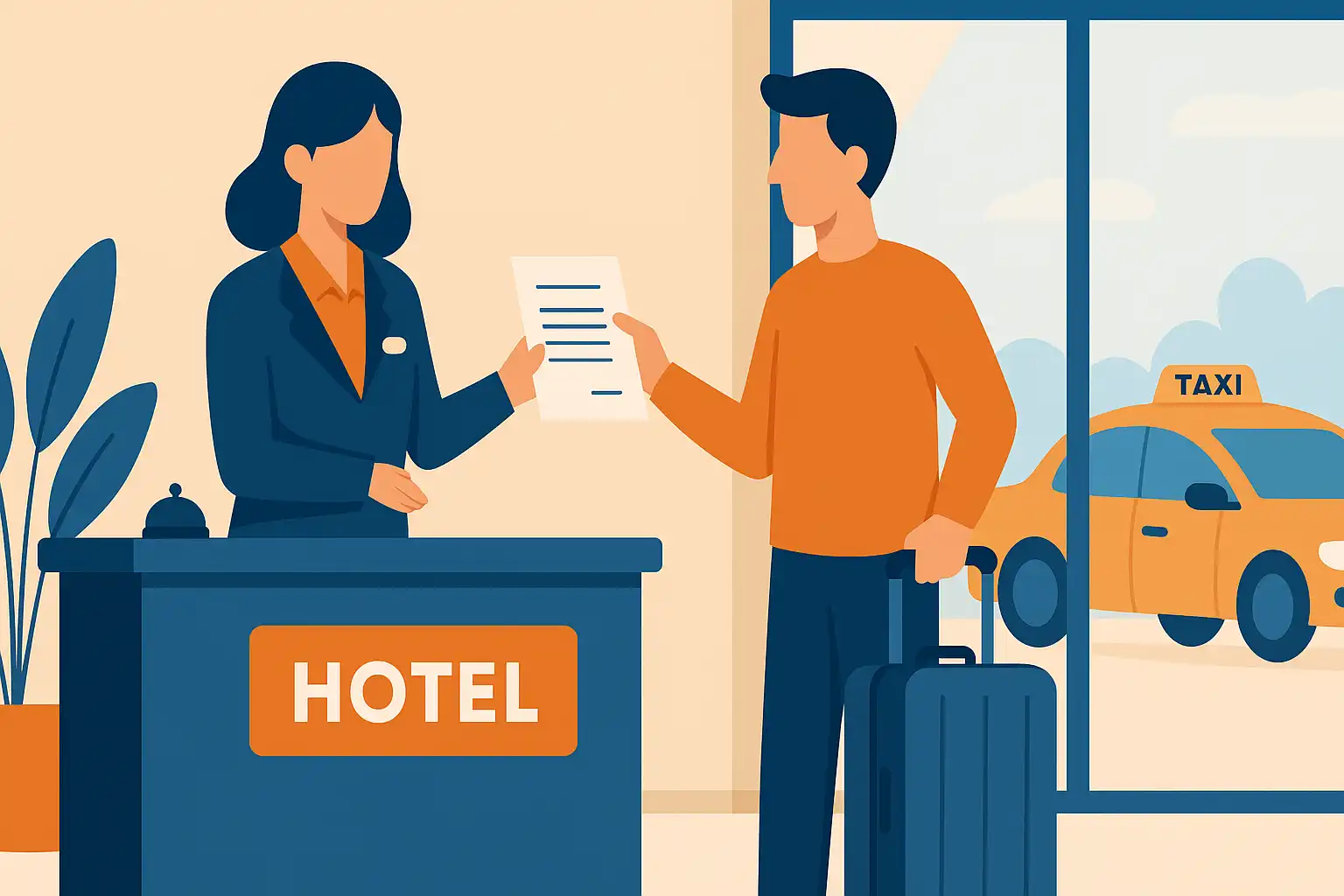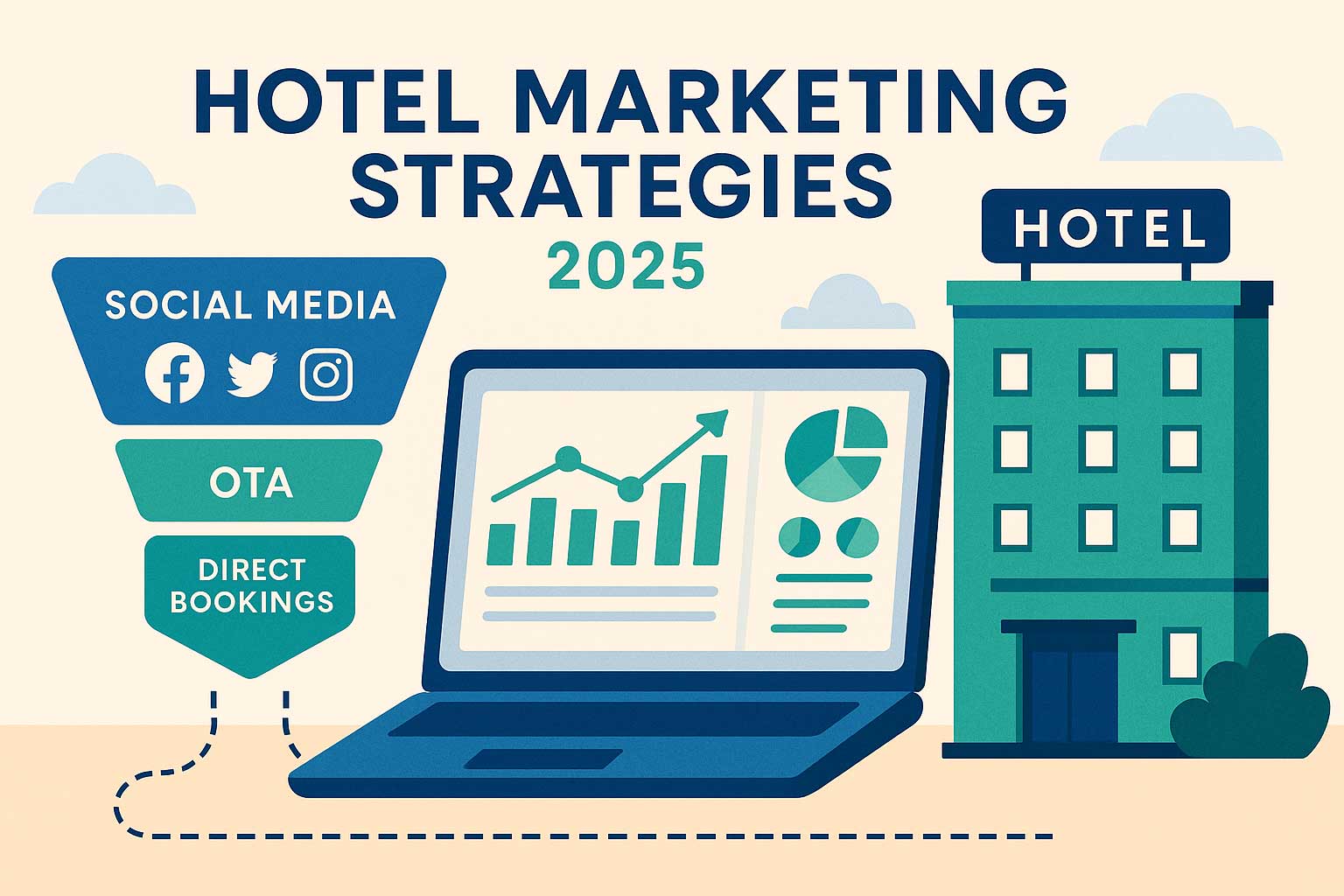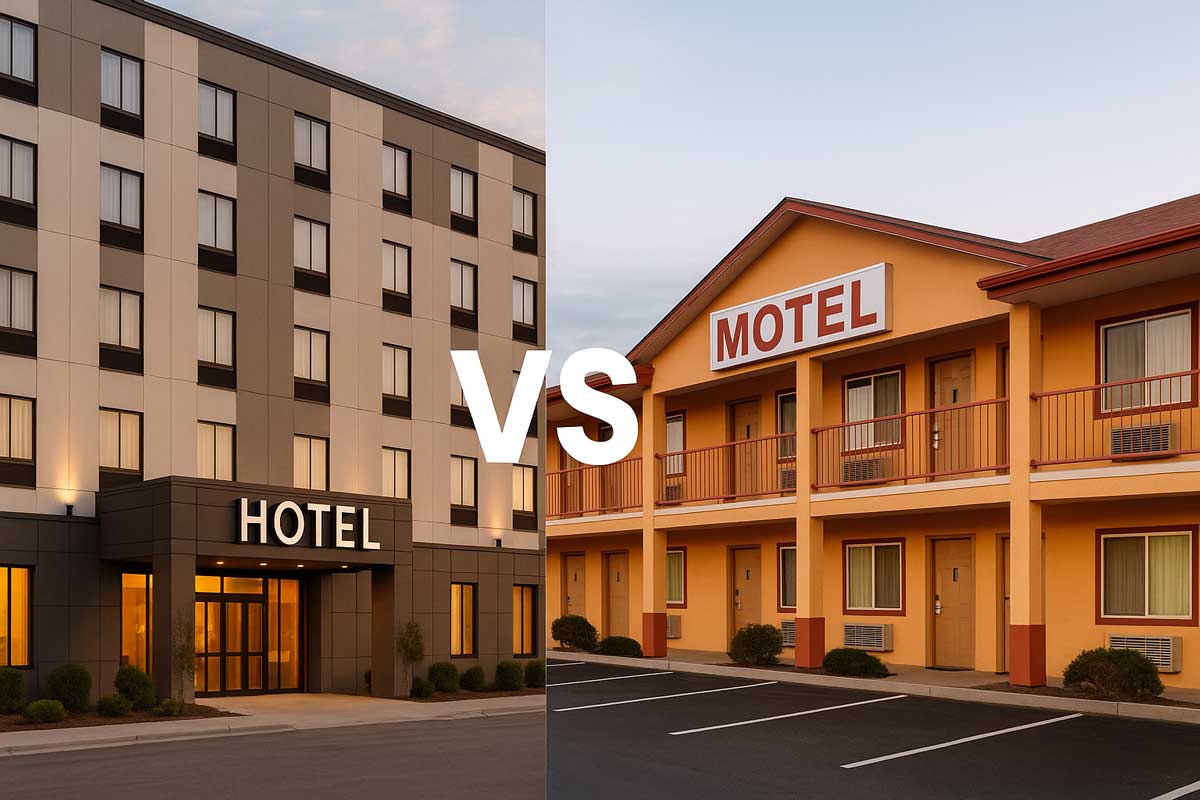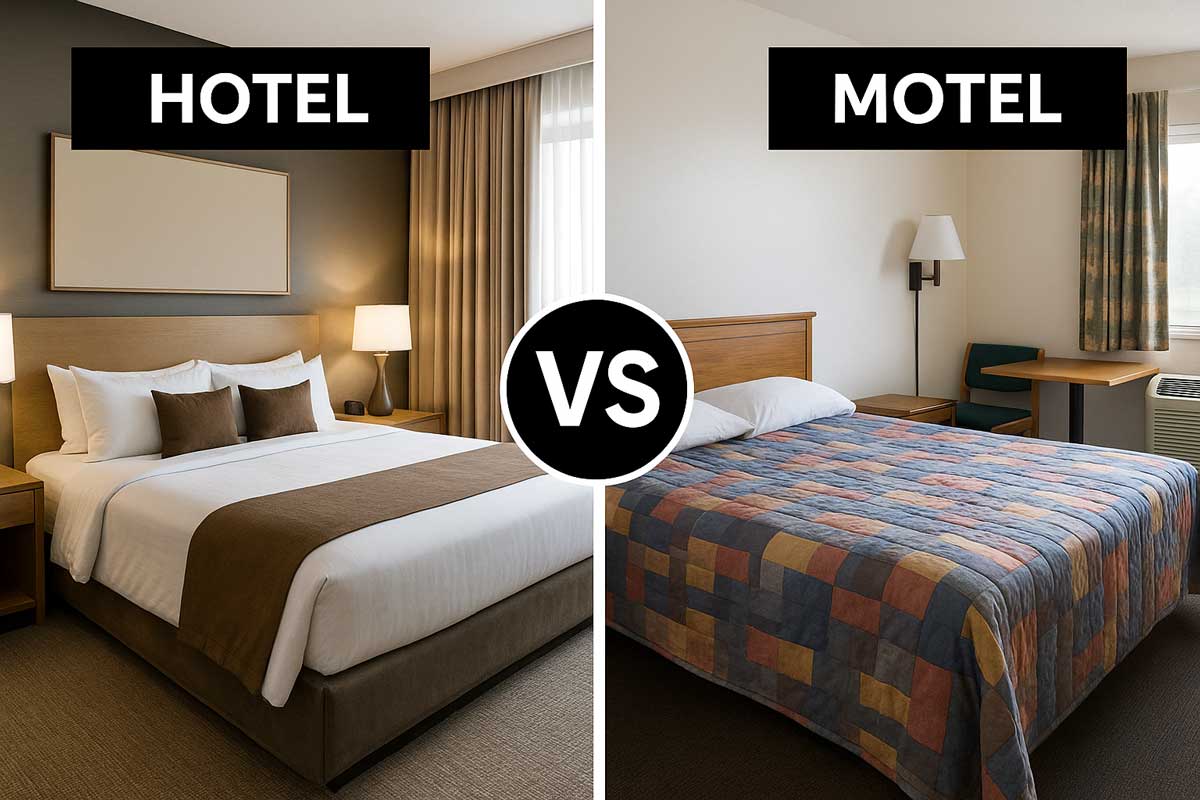Hotels vs Motels: A Complete Guide for Hoteliers
Sep 15, 2025
 Mika Takahashi
Mika TakahashiPopular Categories
Hotel Technology & InnovationHotel Operations OptimizationDigital MarketingIndustry TrendsRevenue ManagementHospitality Industry
Popular Categories
Trending Post

Hotel Walk Letter Template: Professional Guest Communication

Online Travel Agents: What They Are and How They Work

Hotel Security Systems: Modern Protection Solutions

Hotel Advertising: Complete Guide to Boost Bookings and Revenue

25 Hotel Marketing Strategy Ideas for 2025: Complete Guide

AI Reservation Agent: Revolutionizing Hotel Booking and Guest Experience

PMS Communication: Streamlining Property Management Through Effective Guest Messaging
Table of contents
Understanding the hotel motel difference isn’t just about semantics—it’s a crucial part of making smart decisions in the hospitality business. For hoteliers, this knowledge shapes everything from how you position your property in the market to how you manage operations, invest your resources, and plan for revenue. While both hotels and motels offer places to stay, they come from very different backgrounds, serve different guests, and operate in unique ways.
In this guide, we’ll dive into the key differences between hotels and motels from the perspective of the hospitality industry. We’ll cover ownership, revenue streams, staffing, facilities, guest expectations, and return on investment. Whether you’re an investor, operator, or manager, this article will help you understand how each model fits into today’s competitive landscape.
Defining Hotels and Motels in Modern Hospitality
What is a Hotel?
A hotel is a commercial establishment that goes beyond just providing a room—it offers a whole experience. Hotels come in all shapes and sizes, from budget-friendly options to luxurious resorts, but they typically share some common features: multi-story buildings, interior corridors, a variety of room types, and on-site amenities like restaurants, concierge services, conference rooms, fitness centers, and swimming pools.
Hotels attract a diverse range of guests, including business travelers, vacationers, families, and groups. They’re designed for longer stays and broader hotel market segments, generating revenue not only from rooms but also from additional services like in-room amenities, on-site dining, laundry, and spas.
What is a Motel?
The motel, short for “motor hotel,” has its roots in the United States during the rise of automobile travel in the 1920s through the 1950s. Traditionally, motels are roadside properties with exterior entrances, fewer rooms, and parking spaces right outside each room.
Motels tend to be smaller and focus on short stays, catering to budget conscious travelers and those looking for convenience. From a business standpoint, motels operate with lower overhead, fewer departments, and leaner staffing compared to hotels.
While the classic “highway motel” image still exists, most motels today serve budget-friendly travelers and families on road trips, offering basic amenities like complimentary breakfasts and easy parking. They’re usually found in rural areas or along major highways and provide cozy accommodations without the frills.
Location and Market Positioning: Motel Vs Hotel
Hotels
Hotels are usually located in urban areas, city centers, and popular tourist destinations. Their prime locations give guests convenient access to attractions, business hubs, airports, and event venues. For travelers who want more than just a place to sleep, hotels offer proximity to the action—whether that’s attending conferences, exploring cultural sites, or enjoying nightlife.
Hotels attract a wide range of guests: business travelers needing to be close to corporate offices and meeting spaces; tourists looking for comfortable stays near attractions; and families wanting easy access to entertainment and dining. With hotel types ranging from budget-friendly to luxurious resorts, there’s something for nearly every traveler.
This blend of convenient locations and comfortable, well-equipped rooms makes hotels a popular choice for those who want an enhanced travel experience. Guests appreciate the ease of access to services, transportation, and lively local scenes, which adds value to their stay.
Motels
Motels typically sit along major highways, in rural areas, suburban outskirts, or small towns. Their locations are chosen to serve motorists and road travelers who want quick, easy access to their rooms. Unlike hotels, which are often in city centers or tourist hotspots, motels prioritize convenience—guests can park right outside their door for seamless entry and exit.
Motels mainly cater to transient drivers, budget conscious travelers, and families on road trips who value practicality over luxury. Their locations focus on proximity to highways and main roads rather than scenic views or urban attractions. This setup lets guests rest and refresh with minimal detours, making motels a natural choice for those on the move.
Location motels emphasize easy access and ample parking over aesthetic appeal, reflecting their role as functional stopovers rather than destination accommodations. Hoteliers who understand these differences can craft marketing strategies that target budget travelers and road trip guests effectively.

Facilities and Design
Perhaps one of the most obvious motel vs hotel differences lies in their facilities and design, which reflect their distinct purposes and target audiences.
Hotels are typically designed as multi-story buildings featuring interior corridors, elevators, and spacious lobbies, offering a wide range of on-site amenities such as restaurants, bars, fitness centers, spas, swimming pools, and conference rooms. This design aims to provide guests with comfort, convenience, and a comprehensive experience during longer stays.
In contrast, motels usually consist of one or two stories with exterior corridors and doors opening directly to parking lots, focusing on functionality and quick access for motorists. Their facilities tend to be minimal, often limited to basic amenities like vending machines or a small pool, catering mainly to travelers seeking affordable, no-frills accommodations for short stays.
Hotel Design
- Multi-story buildings with interior corridors, elevators, and central lobbies.
- Facilities often include on-site restaurants, bars, spas, gyms, swimming pools, and conference rooms.
- Designed to maximize guest comfort, support extended stays, and enhance the overall experience.
- Rooms come equipped with in-room amenities like minibars, safes, Wi-Fi, and premium bedding.
Motel Design
- Usually one or two stories with exterior corridors and doors opening directly to parking lots.
- Minimal shared facilities; some motels may have a small pool or vending machines.
- Focus on functionality, quick turnover, and keeping maintenance costs low.
- Motel rooms tend to be smaller with basic amenities that cover essential needs.
From an operational standpoint, hotels require bigger investments for construction and renovations, while motels need less capital but also generate fewer ancillary revenues.
Revenue Streams and Financial Model
Hotels
- Bring in revenue from multiple sources:
- Room sales plus food & beverage (restaurants, bars, room service).
- Meetings and events using banquet halls and conference facilities.
- Wellness and recreation, including spas, gyms, and golf courses.
- Ancillary services like laundry, parking fees, and retail outlets.
- Use advanced Revenue Management Systems (RMS) to dynamically optimize pricing.
- Have a strong presence across various distribution channels: OTAs, corporate accounts, Global Distribution Systems (GDS).
Motels
- Revenue mostly comes from room sales.
- Few upselling opportunities; sometimes offer complimentary breakfasts or vending machines.
- Pricing is straightforward, often flat rates with seasonal tweaks.
- Rely heavily on walk-ins, drive-by traffic, and budget-focused OTAs.
For investors, hotels carry more risk but offer higher revenue potential, while motels operate leaner with quicker returns but limited growth.
Staffing and Labor Costs
Hotels
- Require a large, specialized team:
- Front desk staff including reception and concierge.
- Dedicated housekeeping teams.
- Food & Beverage staff like kitchen workers, waiters, bartenders.
- Sales and marketing departments.
- Engineering and maintenance crews.
- Labor is often the largest variable cost after fixed expenses.
- Staff training and specialization are key to guest satisfaction.
Motels
- Run with a lean staffing model:
- Small front desk, often owner-operated.
- Minimal or outsourced housekeeping.
- Employees often wear multiple hats.
- Payroll expenses are lower and staff less specialized.
This difference plays a big role in cost per occupied room (CPOR) and overall profitability.

Guest Expectations and Experience
Hotels
Guests expect more than just a room—they want services, personalization, and extras that make their stay special. This includes room service, concierge help, loyalty programs, and round-the-clock staff availability. Hotels focus on creating memorable experiences, tailoring services to individual needs, and offering in-room perks like minibars, premium toiletries, and fast Wi-Fi. Many hotels actively manage guest satisfaction and online reviews to keep standards high and encourage repeat visits.
Motels
Guests at motels mainly want clean, functional rooms, convenience, and affordability. The focus is on straightforward, no-frills stays that meet basic needs. Unlike hotels, motels offer fewer amenities and less personalized service, concentrating instead on efficiency and consistency. The experience centers around easy parking, quick check-in, and budget-friendly rates. Though simpler, motels meet the needs of road travelers and budget conscious travelers who prioritize practicality and value. Cleanliness, safety, and reliable basics like complimentary breakfasts or Wi-Fi are key to guest satisfaction.
Technology and Systems
Hotels
- Use comprehensive tech setups:
- Property Management Systems (PMS), Point of Sale (POS), Central Reservation Systems (CRS).
- Channel Managers, Revenue Management Systems (RMS), Customer Relationship Management (CRM).
- Business intelligence dashboards and guest communication tools.
- Automation supports housekeeping, maintenance, and financial operations.
Motels
- Employ simpler technology:
- Basic PMS for check-in/check-out and billing.
- Basic OTA connectivity.
- Rarely use advanced revenue management tools.
This tech gap reflects the operational scale and complexity differences.
Marketing and Distribution
Hotels
- Use multi-channel marketing: OTAs, GDS, corporate accounts, travel agents, direct bookings.
- Invest in branding, loyalty programs, and SEO to attract a diverse range of guests.
- Supported by dedicated sales and marketing teams.
Motels
- Rely on location visibility, roadside signage, and budget-focused OTAs.
- Have limited marketing budgets and brand identity efforts.
- Focus on price competitiveness and convenience rather than luxury or extensive amenities.
Investment and ROI Considerations
Hotels
- Require high upfront investment for land, construction, and facilities.
- ROI timelines tend to be longer (5–10 years) but with higher revenue potential.
- Vulnerable to market fluctuations but benefit from diversified income streams.
Motels
- Lower initial investment.
- Faster ROI (2–5 years).
- More resilient during economic downturns thanks to steady budget demand.
- Limited scalability and branding compared to hotels.
Investors should weigh their risk tolerance, market conditions, and long-term goals when choosing between hotels and motels.
Pros and Cons for Hoteliers
| Aspect | Hotels | Motels |
|---|---|---|
| Revenue | Multiple streams (rooms, F&B, events) | Primarily rooms |
| Staffing | Large, specialized teams | Small, cross-trained staff |
| CAPEX | High | Low |
| ROI | Higher, but slower | Faster, but capped |
| Guest Base | Leisure, business, groups | Budget, transient travelers |
| Technology | Advanced PMS/RMS integrations | Basic PMS/OTA setup |
| Branding | Strong differentiation possible | Limited, price-driven |
Industry Trends Blurring the Lines
Select-service hotels are midscale properties that blend essential amenities, offering a middle ground between traditional hotels and motels. They provide conveniences like limited room service, fitness centers, and on-site dining, catering to travelers who want comfort without full luxury.
Motels are increasingly using digital distribution channels similar to hotels, expanding their reach via OTAs, mobile apps, and direct booking platforms.
Guest expectations have risen even at budget motels, with travelers now demanding reliable Wi-Fi, high cleanliness standards, and digital conveniences like online check-in and mobile keys. This push is encouraging motels to upgrade without losing affordability.
Some motels are evolving into boutique limited-service hotels, offering unique designs and selective amenities. This hybrid approach lets them attract a wider market and command higher rates while keeping operational efficiencies.
Which Model Makes Sense for You as a Hotelier?
Choose a hotel model if:
- You’re in a city or destination where guests expect full services and convenient access to attractions, business centers, and transport.
- You want to tap multiple revenue streams—room sales, food & beverage, events, wellness, retail.
- You’re ready for higher upfront costs and longer ROI but aim for greater long-term profitability.
- You want to attract a wide range of guests, from business travelers appreciating concierge and room service to leisure tourists seeking comfort and amenities.
Choose a motel model if:
- You’re in a roadside or suburban area with strong transient demand, serving motorists needing quick, convenient access.
- You prefer a lean operation with lower staffing costs focused on essential services and fast turnover.
- You want quicker ROI and steady demand from budget conscious travelers and families on road trips.
- You aim to offer basic amenities and easy parking over luxury, making motels a budget friendly lodging choice.
By carefully considering your location, target market, and operational capacity, you can decide which model—the hotel or the motel—best fits your goals and guest expectations, setting your property up for success.
Understanding the hotel vs motel dynamics is essential for making smart travel plans and business moves in the hospitality industry. Whether you cater to business travelers seeking comfort and amenities or budget conscious travelers needing affordable, convenient stays, knowing these differences helps you serve your audience better and maximize your property’s potential.
